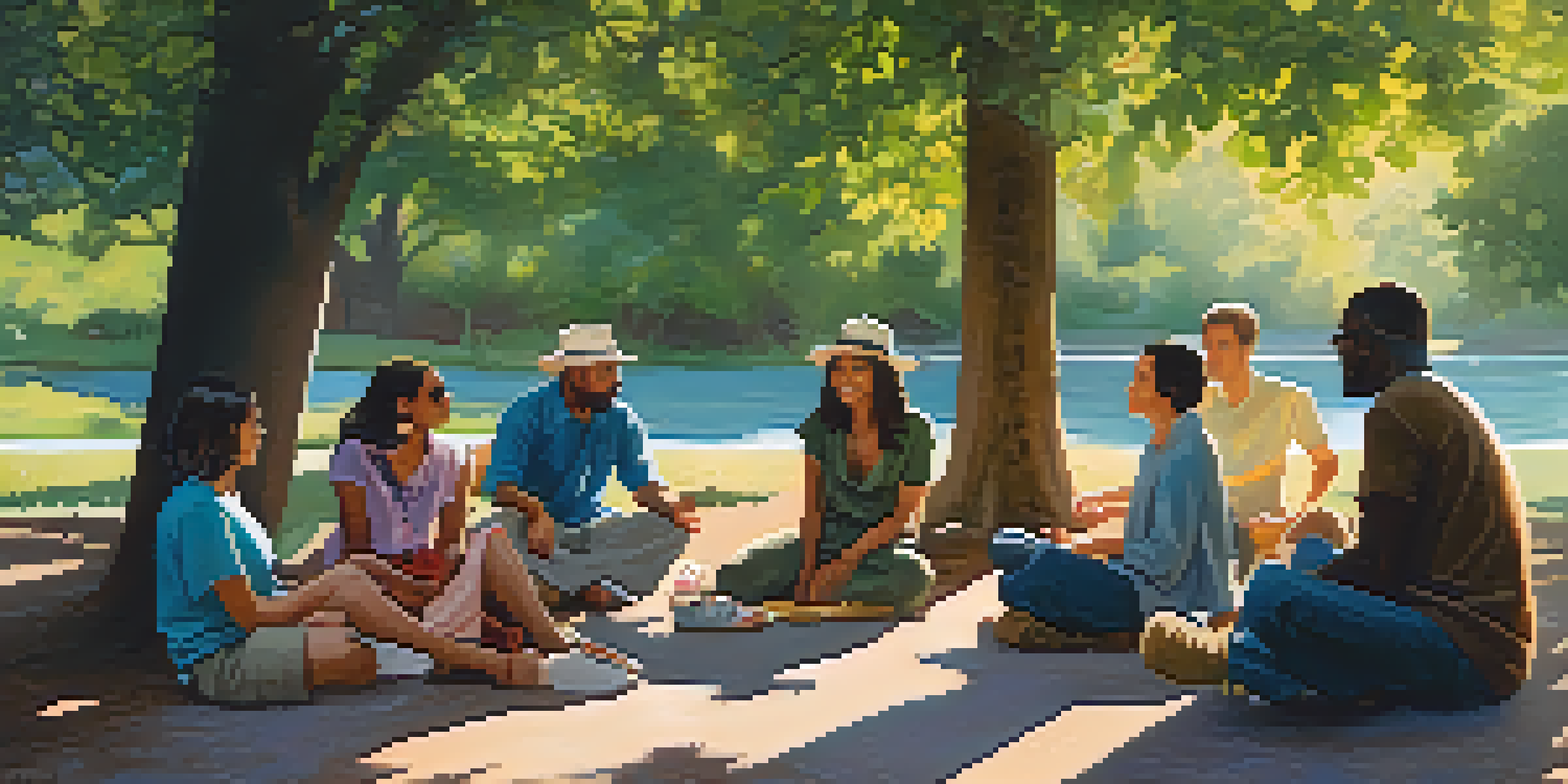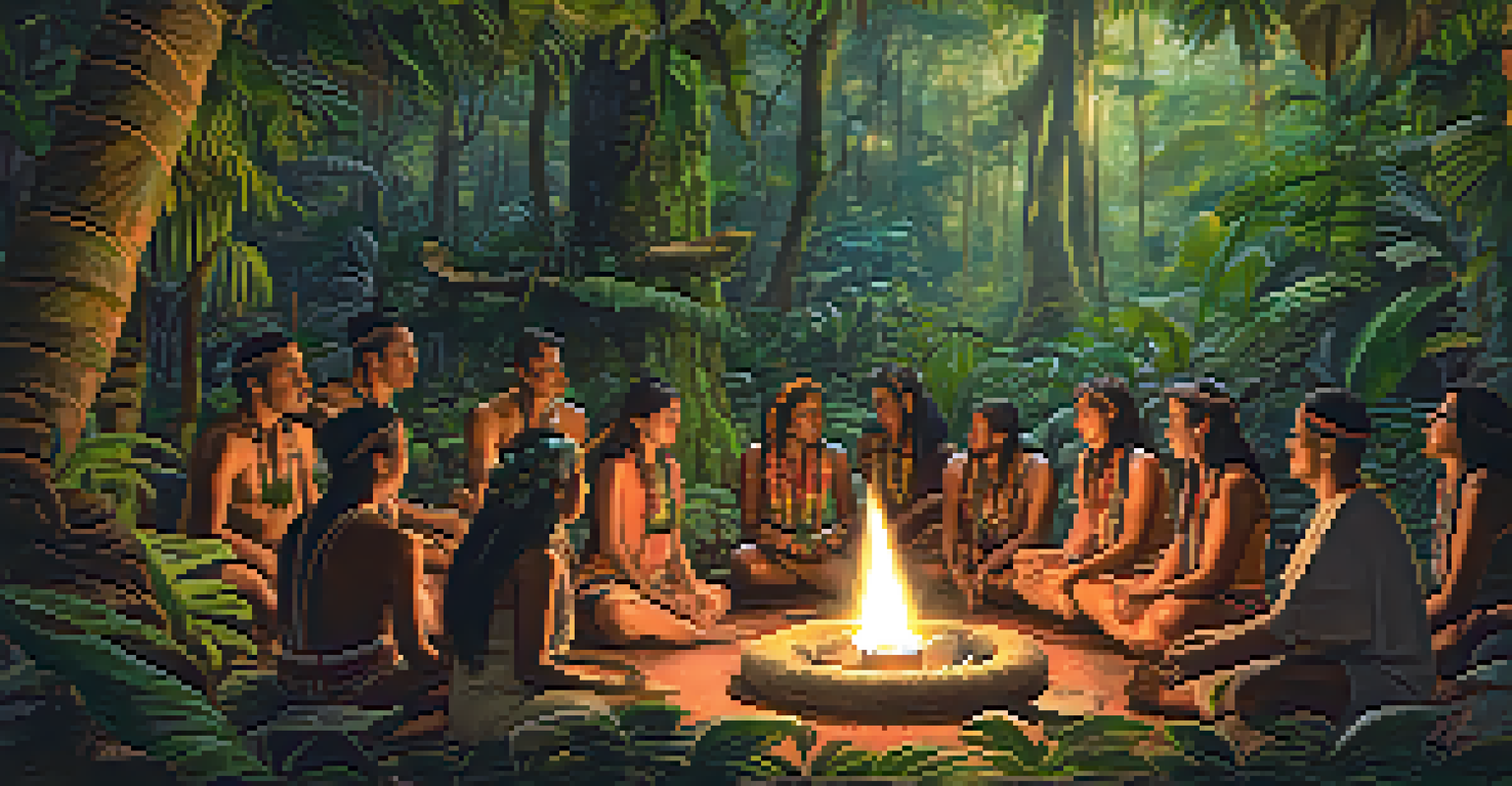The Power of Community in Entheogen Healing Practices

Understanding Entheogens and Their Healing Potential
Entheogens are substances that can facilitate spiritual experiences, often used in various cultural contexts for healing. These compounds, like psilocybin mushrooms or ayahuasca, have been gaining recognition for their potential therapeutic benefits. When used in a supportive environment, entheogens can help individuals explore their consciousness and promote emotional healing.
Healing is a matter of time, but it is sometimes also a matter of opportunity.
The healing potential of entheogens lies not only in their chemical properties but also in the context in which they are used. Setting and support are crucial; this is where community comes into play. A nurturing community can provide the safety and encouragement needed to navigate the often profound experiences that entheogens induce.
In many traditional practices, these substances are consumed in group settings, creating a shared journey that fosters connection and understanding. This communal aspect can amplify the healing effects, allowing individuals to feel less isolated in their experiences, ultimately paving the way for deeper healing.
The Role of Community in Providing Support
One of the most significant benefits of community in entheogen practices is the support it offers. Having a group of like-minded individuals can create a sense of belonging, which is essential during vulnerable moments. This support system helps individuals feel safe to explore difficult emotions and thoughts that may arise during their journey.

Moreover, community members often share their own experiences and insights, enriching the collective knowledge. This exchange can help demystify the entheogenic experience and normalize the feelings that arise. Knowing that others have traversed similar paths can be incredibly reassuring for those new to these practices.
Entheogens Foster Community Healing
Entheogens can enhance healing when used in a supportive community context, providing safety and shared understanding.
Communal support also extends beyond the actual experience. Aftercare discussions and integration circles can help participants process their journeys collectively. This ongoing support reinforces connections and encourages personal growth, making the healing process more holistic.
Shared Experiences Create Lasting Bonds
Participating in entheogenic experiences together can lead to deep, transformative bonds among group members. These shared journeys foster a unique sense of camaraderie, as individuals often feel they have ventured into the depths of their psyche together. This unique bond can enhance trust and openness within the group, leading to more profound healing.
The greatest discovery of my generation is that a human being can alter his life by altering his attitudes.
When individuals leave their comfort zones and confront their inner struggles in the presence of others, they often emerge with a shared understanding. These connections can develop into lifelong friendships, providing a support network that lasts well beyond the initial experience. The ability to recount and reflect on these shared experiences further solidifies these connections.
In many cases, these friendships can encourage continued exploration and personal development. Having companions on the journey can motivate individuals to stay engaged and committed to their healing paths, reinforcing the importance of community.
Cultural Context: Community Traditions in Healing
Many cultures have long recognized the power of community in healing practices involving entheogens. Indigenous tribes often conduct ceremonies that bring people together, celebrating their shared spirituality and connection to nature. These practices emphasize the collective rather than the individual, highlighting how communal experiences can enhance the healing process.
For instance, in the Amazon, ayahuasca ceremonies are typically led by a shaman who guides the group through their experiences. This structure not only provides spiritual guidance but also fosters a strong sense of community among participants. Such traditions remind us that healing is often best achieved in a collaborative environment.
Shared Experiences Strengthen Bonds
Participating in entheogenic journeys together can create deep, transformative bonds among individuals, fostering lifelong friendships.
As modern society begins to embrace these ancient practices, it's essential to honor and respect the cultural contexts from which they originate. Learning from these traditions can help contemporary communities create their own supportive environments for healing with entheogens.
Integration: Community's Role Post-Experience
The journey doesn't end when the entheogen experience is over; integration is a crucial phase that often requires community support. During integration, individuals reflect on their experiences and work to incorporate the insights gained into their everyday lives. Having a community to discuss these insights with can significantly enhance this process.
Community members often share their own integration strategies, providing valuable perspectives that can help others navigate their journeys. This exchange of ideas can inspire new approaches and foster a deeper understanding of the healing process. It also reinforces the idea that healing is not a solitary endeavor but rather a shared journey.
In addition, integration circles can create a safe space for individuals to express their feelings and challenges as they adjust post-experience. This ongoing support can be vital for maintaining the progress made during the entheogenic experience, ensuring that the healing continues long after the event.
The Science Behind Community Healing
Research has shown that social connections can play a significant role in the healing process. Studies indicate that individuals who feel supported by their community experience lower levels of stress and anxiety, which can enhance the overall effectiveness of therapies, including those involving entheogens. The power of social support is undeniable in promoting mental health.
Moreover, group dynamics can influence the effectiveness of entheogenic experiences. When participants are in a positive and supportive environment, they are more likely to have transformative experiences. This alignment of energies within a community can create a synergistic effect, amplifying the healing potential of the entheogens involved.
Integration Requires Ongoing Support
Post-experience integration is crucial for healing, and having a community to share insights can significantly enhance this process.
Understanding the science behind these dynamics can help communities create environments that maximize healing. By fostering supportive atmospheres and encouraging open dialogue, communities can enhance the therapeutic effects of entheogens and create lasting positive change.
Building a Community for Healing: Practical Steps
Creating a supportive community for entheogen healing involves intentional efforts and careful planning. First, it's essential to establish a safe space where individuals feel comfortable sharing their experiences and emotions. This could be a physical location or a virtual platform where people can connect and engage in meaningful conversations.
Next, consider organizing regular gatherings or integration circles. These events can facilitate ongoing discussions, provide support during the integration phase, and strengthen bonds among participants. By encouraging open dialogue and active participation, communities can cultivate an environment that promotes healing and growth.

Lastly, it's important to focus on inclusivity and diversity within the community. Different perspectives can enrich the healing experience, and embracing a variety of backgrounds can foster deeper understanding and connection among participants. Building a strong, inclusive community can be the key to enhancing the healing power of entheogens.